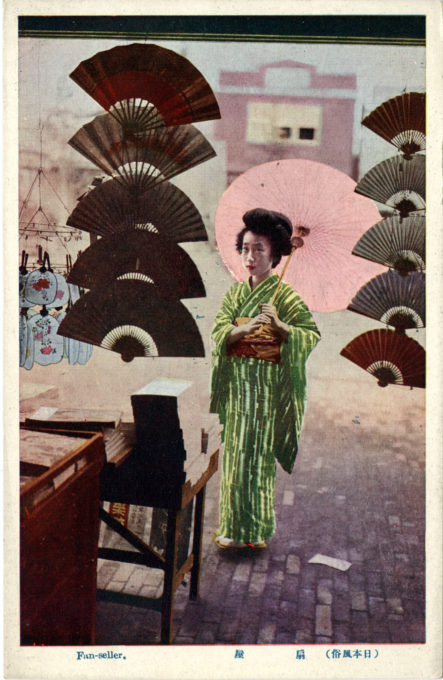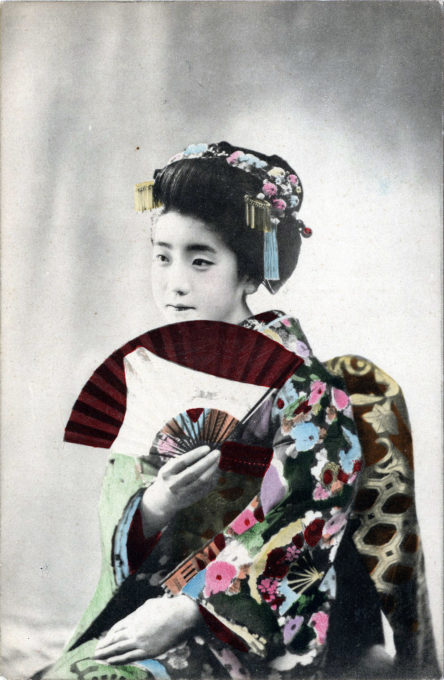“Incidental mention of fans occur in the oldest official annals of Japan. The chief kinds of fans are the uchiwa or round fan, not capable of being shut, and the ogi or sensu, folding fan.
“A noble lady, widow of the youthful hero Atsumori, is credited with the invention of the folding fan. At the temple of Mieido in Kyoto, whither she had retired as a nun to hide her grief, she cured the abbot of a fever by fanning him with a folded piece of paper, over which she muttered incantations, and to the present day the priests of this temple are considered especially in the manufacture of fans, and the name of ‘Mieido’ has been adopted by many fan-shops in Japan.”
– We Japanese, Vol. 1, Miyanoshita Fujiya Hotel, 1934

“Fan seller”, c. 1930. In the foreground, and at right, are displayed sensu folding fans. In the background, left, are hanging light-blue-colored rigid uchiwa fans.
“Fans have been known in Japan for over a thousand years. There are two main types: the informal round uchiwa and the folding ogi or sensu. The stiff uchiwa is of Chinese origin and was probably introduced into Japan in very early days. The folding fan is of Japanese invention of unknown date.
“… The folding fan has always played an important role in Japan for such occult reasons as ‘blowing in luck’ and ‘driving out evil,’ mainly because it is of a ‘widening’ shape that augers progress in one’s fortunes. A sensu must therefore be carried on all auspicious occasions, even in winter. Held partially open before a speaker’s mouth during conversation, it will also serve the purpose of preventing his breath from defiling his listener. The uchiwa serves the purely utilitarian purpose of creating a breeze. It is never carried formally and is infrequently used by men.
“… Since antiquity, folding fans have been used to convey poetic messages – particularly love allusions – written on the paper surface. This is still another aspect of the Japanese regard for the fan as an article of good omen.”
– Trades and Crafts of Old Japan: Leaves from a Contemporary Album, by Eric Kaemmerer, 1961



